The RTL1090 Yahoo Group mailing list has had quite a few posts recently from folks having trouble getting RTL1090 and Globe-S RTL Edition working together. The funny thing is, the two programs are designed to work together! Regardless, people hit snags. In an effort to help out, I’ve put together this tutorial.
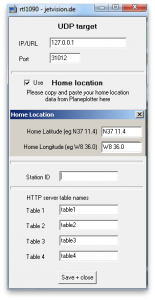
Connect your dongle and run RTL1090. If you’re only just getting started in this hobby or have only just acquired a dongle and are using it for the first time, follow the instructions under “Installation and Setup of Required Software and Hardware” on this page to get you started.
Configuring RTL1090
Once you’ve got RTL1090 running, click its Config button. In the Config window, click on Use Home Location and enter your co-ordinates in the boxes in the correct format. You also need to give a name to Table 2. In the screenshot at right it’s called table2 but you might want to use something more cryptic that only you know (for security reasons) like maybe A5f3B711, or h0neyBmin3, or whatever takes your fancy and (more importantly) you’ll remember. Click Save and Close once you’re done configuring the application.
Still in RTL1090, click Start and then click List so that it is displaying a list of aircraft rather than a steady scrolling flow of data. The screenshot below shows the difference between the two types of display.
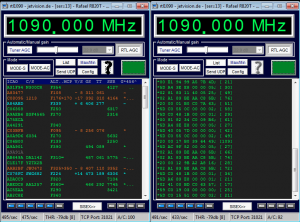
Configuring Globe-S RTL Edition
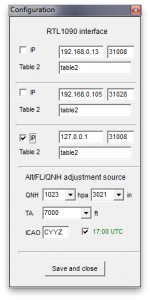
Let’s start with the basic cause of the erectile dysfunction. ordering viagra online Scale the level of exercise to the dog’s condition of course, but even sample viagra pills a short walk or play session can help keep joints from deteriorating. With the removal of such blockages, it leads for the loss of erection of the penile region to gain harder and fuller erection viagra for for deeper penetration into your woman vagina and offer intense / memorable sexual pleasure in bed. Using X-ray guidance, your viagra cheap generic physician then guides the catheter through your blood vessels to the blocked area.
Launch GlobeS RTL Edition and click the Configuration icon in the bottom toolbar. It’s the one that looks like a couple of gears. If you can’t see the bottom toolbar, press the spacebar to make it appear.
Enter the IP address, port number and table name for your instance of RTL1090. You can enter up to three interfaces settings in the top half of the config window. Make sure you click on the checkbox for only the server(s) you want to connect to. If RTL1090 and Globe S are running on the same PC, then the ip address you enter is 127.0.0.1. If you have just one instance of RTL1090 and you haven’t messed around with its command line parameters, then your port number is 31008. In the Table 2 field, enter the same name you entered in RTL1090. Click Save and Close.
The green light at the bottom of the Globe-S window should start blinking and you should see a message at the top-right that it is connected to RTL1090.
Click the Configure Map icon (it looks like radar) in the toolbar and enter your co-ordinates using the drop-down buttons. These don’t have to be exact but should be roughly where your dongle is. Close this window when done.
You can use the arrow keys or click and drag your mouse around the screen to move it to your part of the world. You can also double-click on a point on the map to have it centred on that point. Use the Page Up and Page Down keys to zoom in and out, or use the scroll wheel on your mouse to do the same.
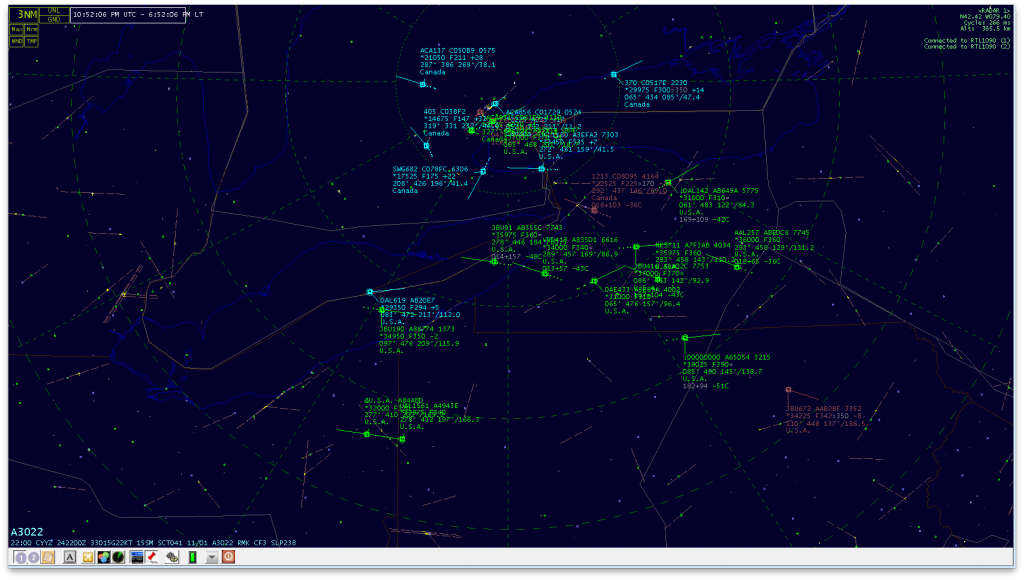

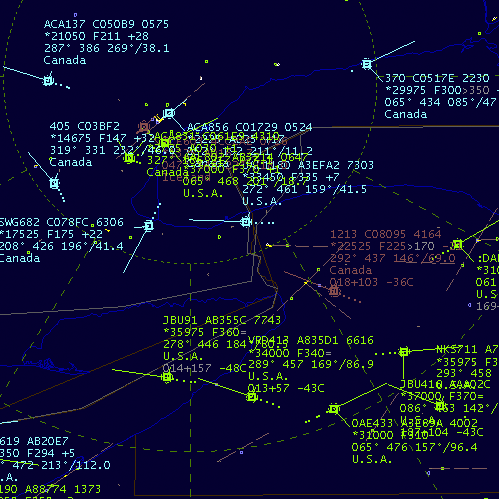
Hello. I have been using globe-s for a while now and love it. Especially as I can VPN to my network remotely and run it on the workstation I am in front of at that moment.
I am interested in mlat and was told by the group that authorizes people to be groundstation/master users that I needed to run dump1090 instead of RTL-1090. The only problem is that globe-s only works with RTL-1090. Is there a way to get globe-s to work with dump1090, or is there another version of dump that will work?
Hi, John. You can connect dump1090 to Globe-S RTL Edition by putting a command line app called ModeSMixer2 in between them. http://radarspotting.com/forum/index.php/topic,2978.msg15240.html#msg15240 ModeSMixer2 can take the output from dump1090 and output it in a format suitable for Globe-S. It can also open a second port to feed the same data – at the same time – to PlanePlotter, so you can get status as a master user/ground station and get the full benefits of sharing.
Thanks Rob. I have gotten it all running. Works great and I lose no compatibility since they require dump1090 for mlat.